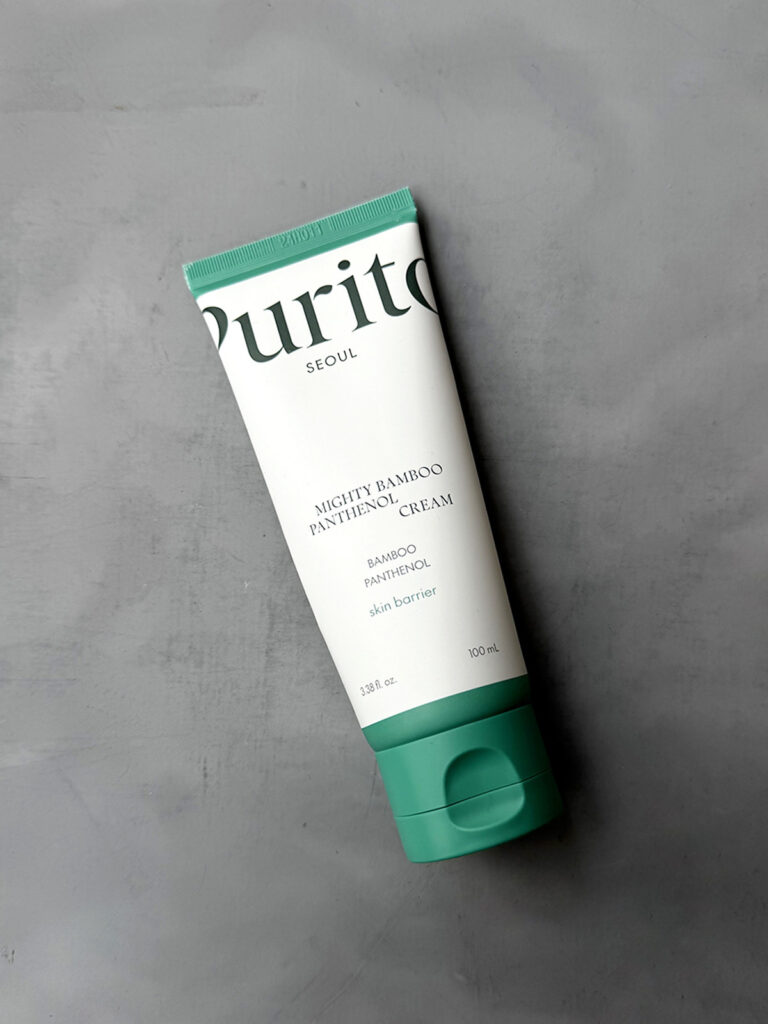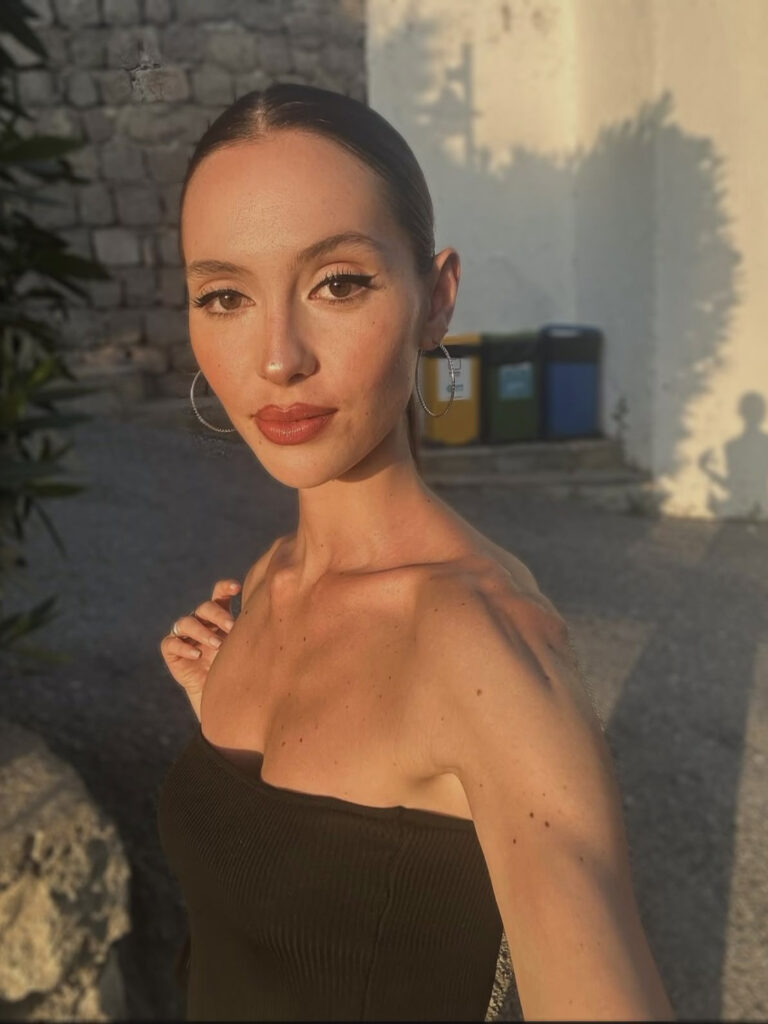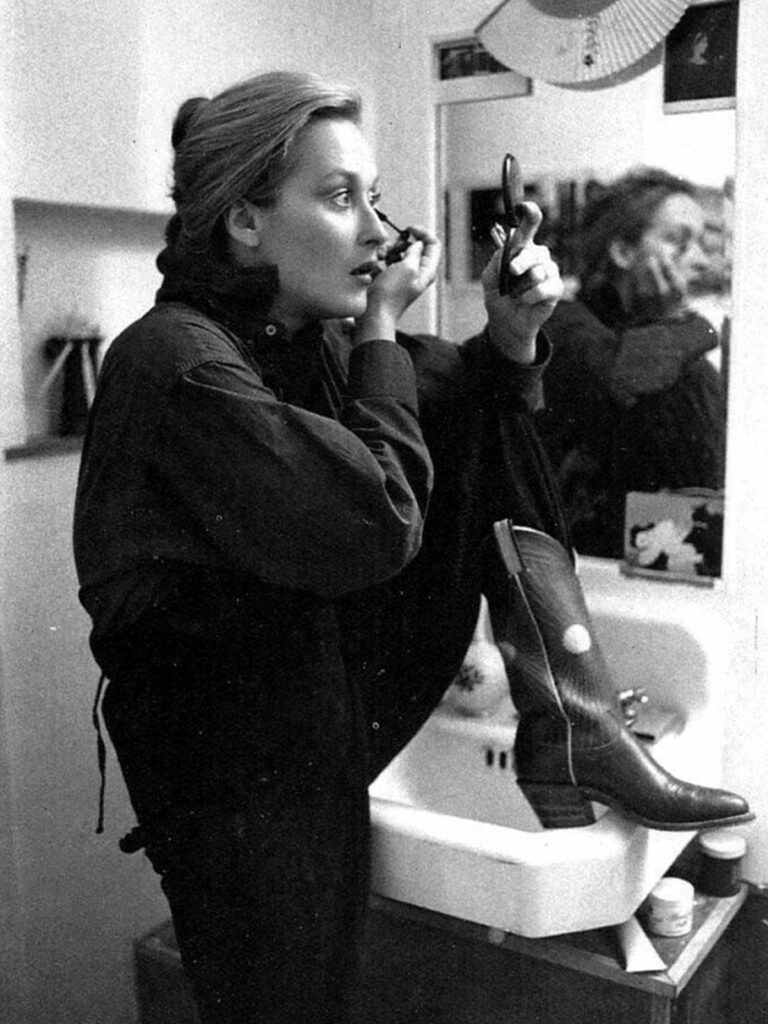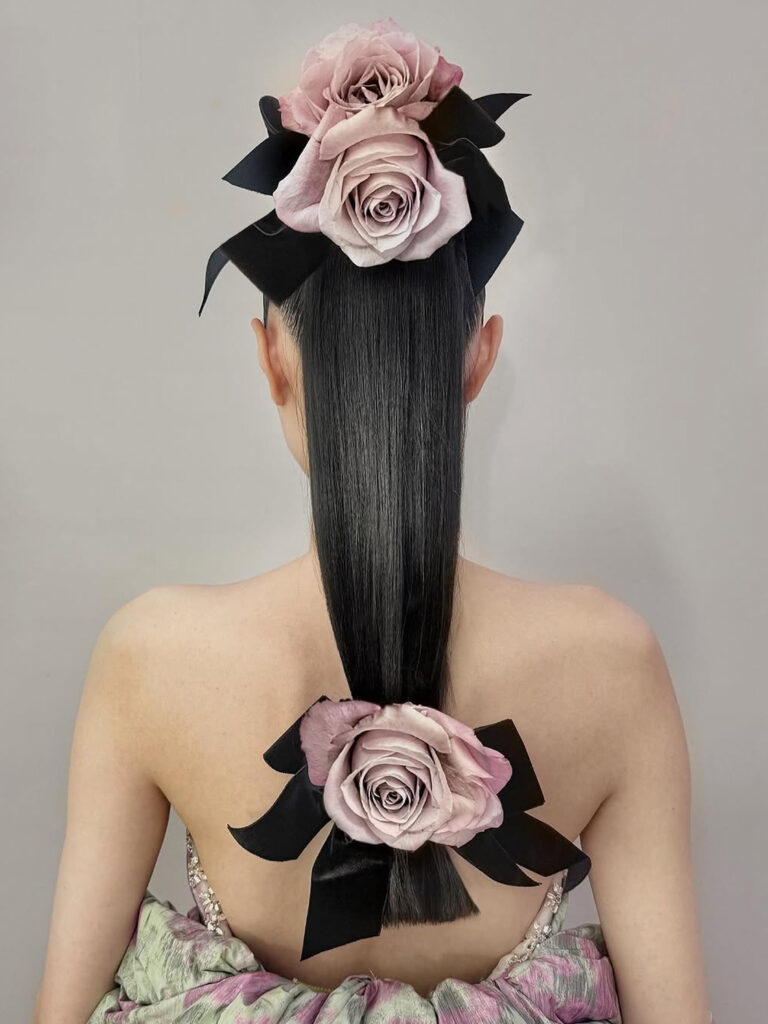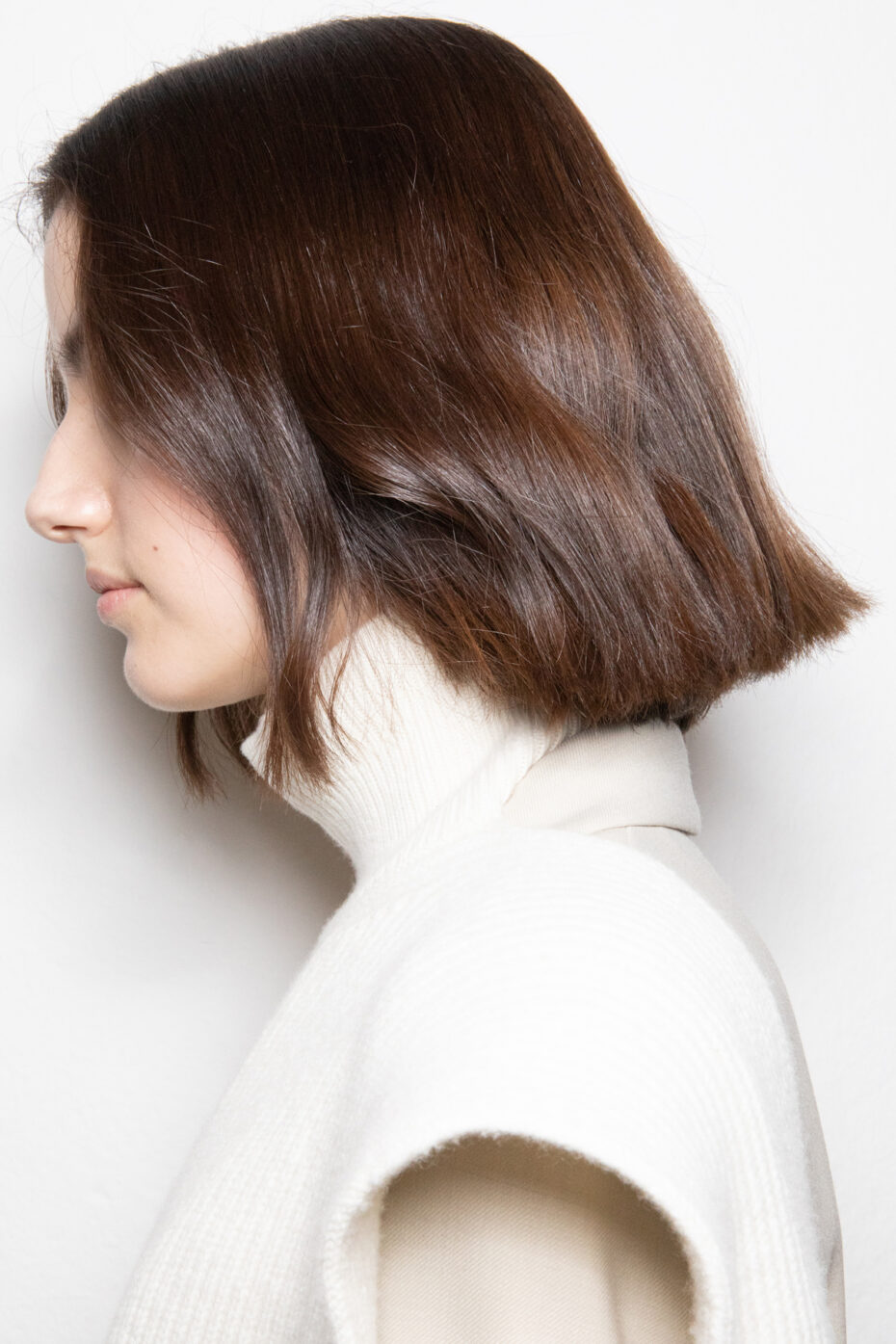
Photo: Getty Images Turkey
Hair
This Is What It Means To Have Healthy Hair
Celebrity hairstylist and Dyson Hair Global Styling Ambassador Matthew Collins breaks it down to Valerie Dayan.
Text Valerie Dayan
Rules and rigid standards no longer work in the contemporary world of beauty. But when it comes to having healthy hair, universal golden standards apply to all different textures. Matthew Collins, celebrity hairstylist and modern-day hair wizard (I recommend you check out his how-to videos; his swiftness in creating refreshing styles in a matter of moments is quite something—just ask Mandy Moore or Kristen Bell), emphasizes that the first and most important thing for all types of hair and hairstyles, is, the health of the strands. Every new style you want to create, the frizz you wish to eliminate is connected to that. Unsurprisingly, he’s the global styling ambassador for Dyson Hair, which bases all its technological innovations on not compromising hair health for great hairstyles. I met with Collins on his recent trip to Istanbul and had the chance to chat about what it actually means to have healthy hair.
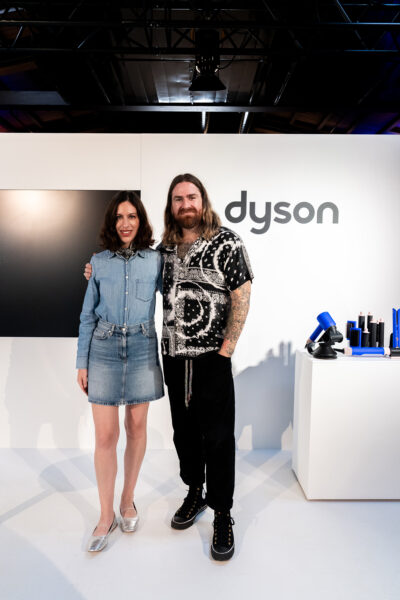
How did your journey with hair begin?
I began early. When I was twelve years old, I was obsessed with my hair. I was a self-conscious kid. I have a really round face—when my hair grows slightly on the sides, I feel like I gained fifteen pounds. So, I started to watch my barber, and every three days, between haircuts, I would just fade my sides so that I would feel skinnier. Eventually, I went to university, and I failed out of university. I wasn’t passionate about it because I didn’t go to school. I couldn’t do it. I was having a very depressing day, and I was crying to my mom, “My friends are in school, and I am doing nothing with my life. What am I gonna do?” She said, “Mathew, you love to do hair, so why don’t you follow that?” I never followed fashion. I didn’t know that hairdressers were doing what I was doing now. I only saw the barber in a small salon, and that was not what I wanted for my life. She convinced me to sweep the floors up the salon she went to. I went, and on the first day of sweeping the floors, it sparked, and the salon owner became my best friend. He reminded me of what I told him back then: “I wanna move to LA and work with celebrities.”
What was the turning point in your career?
To be honest with you, I don’t know if it’s even happened yet. Because of my dreams when I was 23, I had two goals: One was to be with a brand in five years, and it happened in six months. And the other one was to be on the international stage for a brand in ten years. That happened six months later. As soon as I achieved those goals, I immediately forgot what I had done. And then it is, what’s next? Being self-conscious about yourself and not thinking you are not good enough is my superpower. It is what drives me because I am never satisfied with the work I do.
When I look at your work, I see that you respect textures and love romantic waves. How would you describe your signature look?
I want to make my clients feel the most beautiful.
These days, we are talking a lot about healthy hair. What do you think defines explicitly healthy hair?
To me, the first thing is shine. If your hair is damaged, light does not reflect out of it. If your hair’s healthy, the cuticles smooth, and the light reflects out. That’s the first thing I notice about someone’s hair. To me, healthy hair always looks expensive. You don’t have to spend a lot of money on it.
When you think of styling, the first word that comes to mind is heat.
Yes. That was the goal of every brand: to make the hottest tool. Also, in places like Turkey, many hairdressers use tools with a lot of heat to control the frizz. But the problem with that is that the heat will damage the hair. Today, it’s not about having one hairstyle but having smooth, beautiful hair one day, and the following week, you may want to embrace your natural and wavy texture. But if you blow dry hair every week with extreme heat, your hair will be frizzy when you have a natural hair day. Using intelligent heat control devices will make your hair healthier. We all want different hairstyles at different times. To do that, we need tools that promote healthy strands. Health is at the forefront of the brand.
Moisture and hydration are a big part of healthy hair. What are some tips to lock in that moisture?
Well, to be honest, I think with products, one size doesn’t fit all. You will see me put a drop of oil in my hair. That may be good for me, but someone else might need a half bottle. I suggest people find the perfect amount to keep their hair moist by trying four drops daily. And if it is not enough, try eight and then sixteen the next day. Keep doubling it until you get to the point where it is too much. But also, if your hair is healthy, it retains moisture. If your hair is unhealthy, the cuticle splits and drops the moisture, allowing the humidity to make your hair frizzy.
How do you think using Dyson Hair products affects moisture retention?
By making sure that the hair is healthy. The most important thing with our tools is intelligent heat control. Dyson was the first company to use this technology. Some people only talked about intelligent heat control once we did; finally, it is something people are talking about. We are both measuring the heat and adjusting accordingly. For example, the Corrale plates allow you to use high heat, but it is controlled to do fewer passes with the hair. Really, it is all about the hair’s health that retains the moisture.
Dyson is not just for women – I know you demonstrate a lot of men with short hair. What are some ways men can incorporate these innovations into their hairstyles?
I got into this profession by doing men’s hair. The pickiest man is more pickier than the pickiest woman. Because if you cut the hair a millimeter wrong, it ruins the whole look. If I took an extra millimeter of your hair, you probably wouldn’t even notice. Right? The high-power airflow is excellent for men because they get excited about its technology and design. You see that almost every barber now uses a Dyson blow dryer. It is ideal for men because it blows with air without brushes. You can merely use the airflow and fingers to control the hair.
It’s officially frizz season, and I think it’s one of the biggest, universal hair issues. What are some practical at-home tips to prevent and tame?
The frizz gets the worst around the hairline and the right back at the neck, where you get hot and sweaty. It is essential to focus your time in those areas. You can take your Dyson Corrale and gently flatten the root area to remove the elasticity slightly. Make sure your hair is healthy; it is especially important for Turkish women to incorporate creams, oils, and serums into their routines.
The beauty and fashion industries are finally embracing natural textures. How do you view this shift, and how do you think Dyson empowers people to embrace who they are?
When I first went to Paris Fashion Week, maybe 15-20 years ago, you would never see different hairstyles on any models. It’s always the same hair; race, ethnicity, or texture doesn’t matter. Today, there are four or five different hairstyles for each show. From the beginning, we cared about every hair texture with Dyson. They did all the research with all the different hair textures and hair types and how they react, and I think it’s so important that we learned about that first. Many people believe the curlier your hair, the stronger it is. But actually, the curlier the hair, the weaker it is. With the user trials, we learned the tools and accessories that work for the hair type. As I said before, the number one thing is having healthy hair. You can switch your hairstyles and have less frizz if you have healthy hair.
What Dyson tools would you recommend for me?
You wear your natural hair, so to me, Supersonic and Corrale. Supersonic has the diffuser, and the comb attachment to stretch the hair out if you want to; the gentle dryer can tousle dry, and you can cool it out to get a little dry when you go outside. Or the Corrale. You can create a similar texture to what you have. For the frizzy areas, you can mimic your natural texture. Mimicking the natural texture with the flat iron is my favorite thing; I could do your hair exactly like it is, but smoother and less frizzy.
What were some trends you observed this year?
I think a couple of things. What was funny when we first launched the Airwrap blow-dry was the less popular trend, which is what the Airwrap is so good at creating. But it still became such a popular tool. And now, the big, expensive-looking blowout is one of the top trends. But (with Airwrap), it is actually less harsh on your hair. I think it is beautiful to come back to big, sexy, soft hair. I also love the natural hair trend. But still, people don’t want to be always natural; they want to switch it up if they choose to.
Do you have a favorite look for the fall season?
I always love a mid-length bob with a natural texture. Honestly, what you have is perfect! I love some warmth to the hair, and red and copper are returning. For someone who can pull it off, it can be beautiful.
At Wonderflaw, we believe that flaws are qualities that make us unique creatures. What is your favorite flaw and why?
It is my self-consciousness. It is something I saw as a flaw forever, and now I’m embracing the true meaning of it. People always say they don’t care what other people think. I do care what other people think, and that’s what makes me a kind person. Because I want to be nice, I care what people think and how my client feels when I finish their hair. I need to see that joy in them. My self-consciousness is striving for that happiness that I give them, which makes me strive for perfection — which I will never get to. I will never be perfect, but I continuously educate myself and learn more. My self-consciousness drives me to perfection.
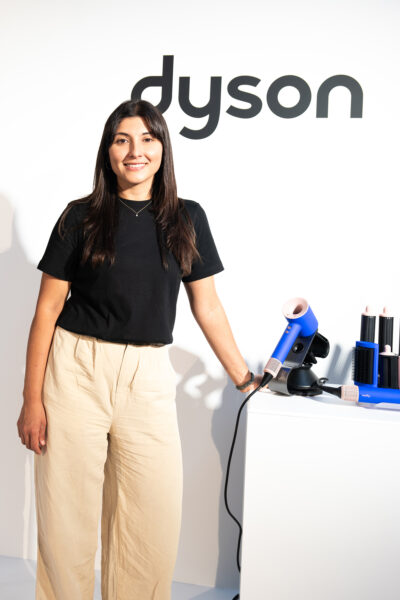
A Chat With Veronica Alanis, Design Manager at Dyson Hair
What defines healthy hair, and how do Dyson technologies help maintain that healthy texture?
The first thing to remember is that hair is dead when it comes out of the scalp. Once it gets damaged, making it look good again is impossible. So, to me, healthy hair is basically hair that hasn’t been damaged. We can understand the damage by the outermost, later called the cuticle. Hair is composed of a cortex that gives its elasticity and shape; the cuticle protects that cortex. Healthy hair has a smooth cuticle that protects the heart of the hair. At Dyson, we are obsessed with ensuring the cuticle is protected. There are many ways that the hair can get damaged: UV light, pool, sea, heat… We know that above 150 degrees, the protein in the cortex, alpha keratin, starts to turn into beta keratin, the weaker version of the protein. Then, it becomes open to breakage by losing elasticity and shape. Above 230 degrees, hair starts to change in a way that’s impossible to recover; we must make sure we never use that amount of heat in any of our products. We also want to minimize the time you expose your hair to heat. We also understand that style is key; people will always prioritize style, and that’s fine. We want to help people achieve that dream style- the perfect curl or the smoothest straight style with the least amount of heat possible.
In the past, when we thought about hair styling, the first word that came to mind was heat. Dyson is in the process of transforming our vision of what styling can be. What are your thoughts on this?
This whole thing has been a journey I feel privileged to be a part of. I grew up putting all the heat in the world in my hair because I naturally have curly hair. I think it’s human nature to want what you don’t have, right? The main trick or factor that has helped us understand heat is just one piece of the puzzle. When changing your hairstyle from wet to dry, you have hydrogen bonds in your hair, and you don’t only break those proteins with heat: You can break them up with air! We knew that by having better control of the air, we could rely less on heat. Supersonic, Airwrap, and Airstrait are styling hair from wet in low temperatures because we have that airflow. Corrale is slightly different. We knew people wanted to style from dry, and we couldn’t avoid that. So, here’s what we’ve done: You have two factors for straightening hair: tension and temperature. When you can apply tension – the force required to straighten the hair – better, you rely less on heat. That’s why the ‘flexing plates’ are so important. It helps us apply that force evenly. We haven’t changed the world yet, but we’re on a journey to have people understand that it’s only not about heat.
This interview has been edited and abbreviated for length and clarity.
Watch the full interview in the video below.


